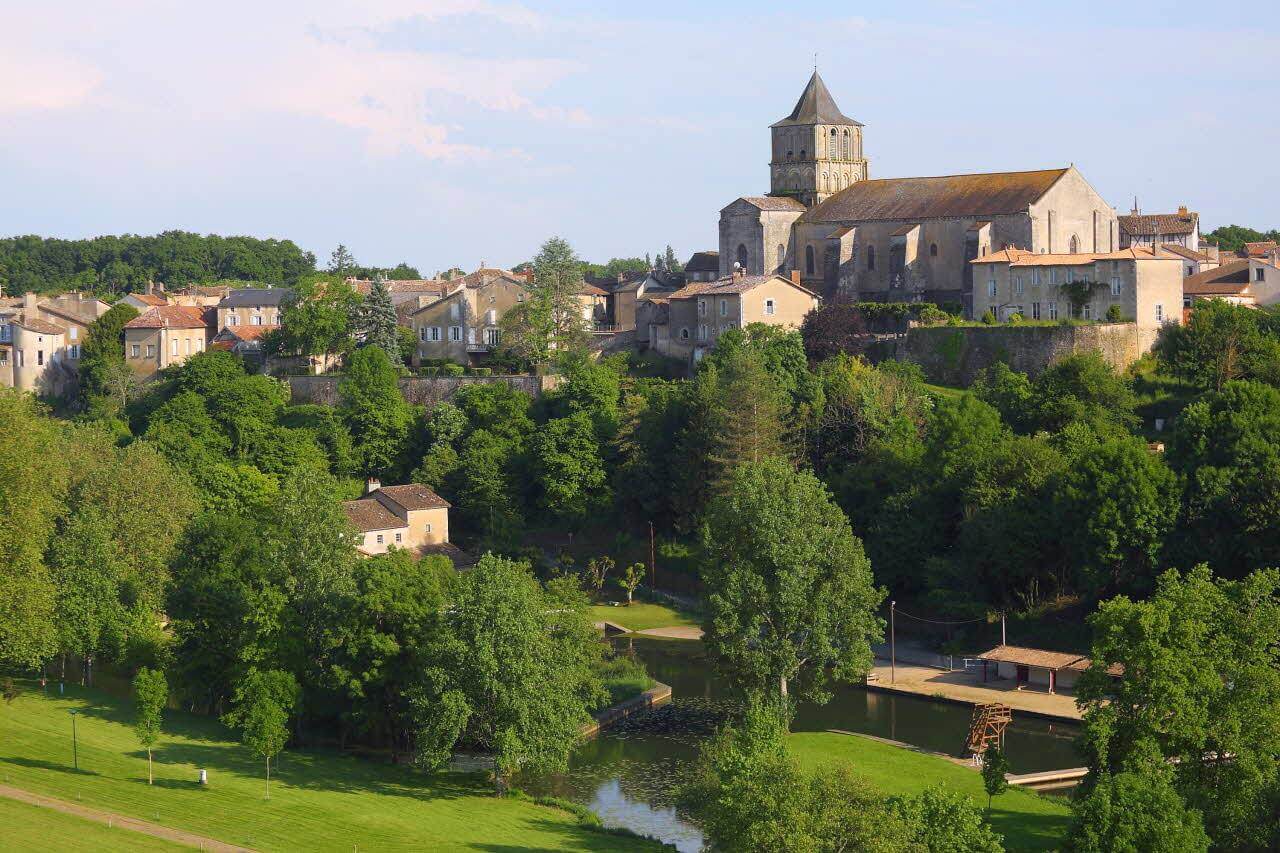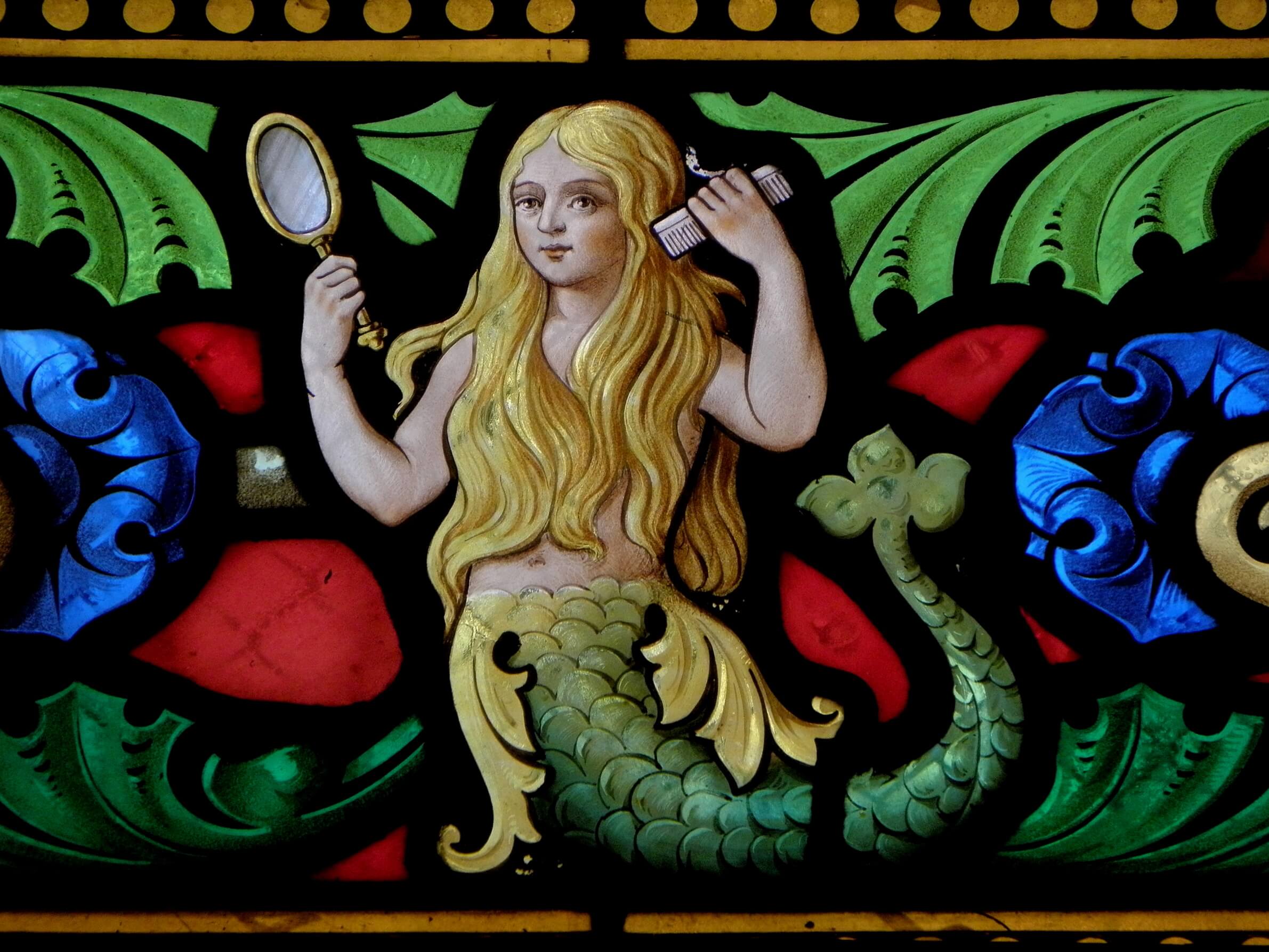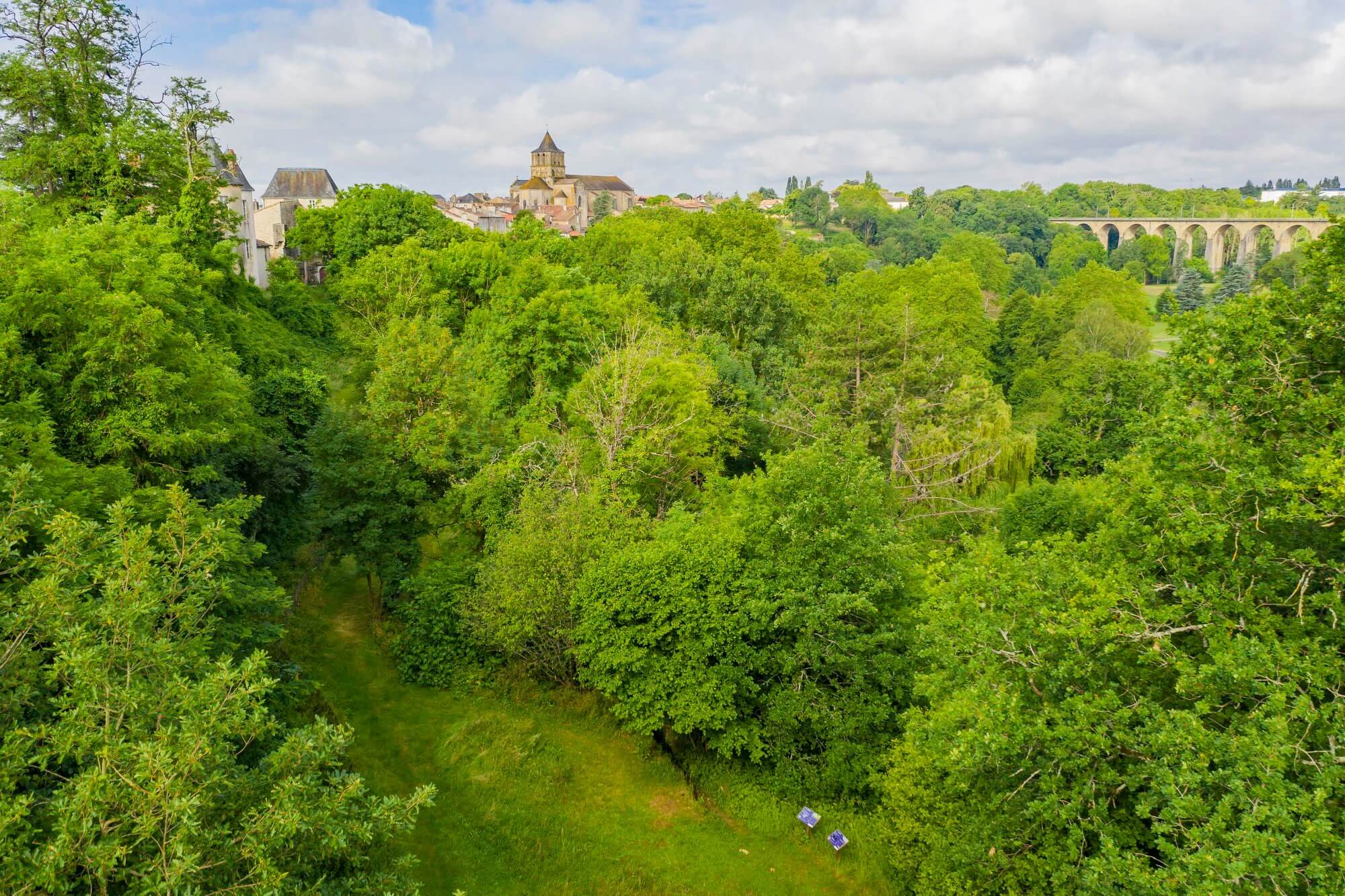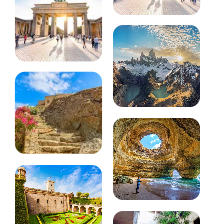Visit Lusignan: between myths and legends

Just 20km south-west of Poitiers, between the Poitevin marshlands and Futuroscope, lies the charming medieval town of Lusignan.
Lulled by the legend of the fairy Mélusine, its history dates back to the time of the Celts.
An interesting and enjoyable visit awaits you in the heart of the 6 valleys region, and an escapade not to be missed from Poitiers!
The history of Lusignan
First of all, let’s take a look at the history of the town.
As we said, Lusignan was already what is known as an oppidum (fortified town) in Celtic times, in the 2nd and 1st centuries BC.
But it was between the 10th and 14th centuries that the town really came into its own, linking its destiny to that of the powerful family of the Lords of Lusignan, who went on to become Kings of Jerusalem and Armenia, and then Kings of Cyprus during the Great Crusades.
In the 14th century, Lusignan, with its fortified castle, was considered a stronghold of Poitou.
But in the 16th century, during the 5th religious war, the Count of Montpensier laid siege to the town and took Lusignan castle, which was finally destroyed on the orders of Henry III.
In the 17th century, the fortifications were demolished and the town grew thanks to its position as a trading centre on the road between Paris and La Rochelle.
During the French Revolution, Lusignan was on the side of the revolutionaries! They planted the Tree of Liberty, which in the 19th century was as much a symbol of the Revolution as Marianne. It’s the tree you see on French €1 and €2 coins.
Today, Lusignan is a rural commune with a population of around 3,000, marked by the importance of its agricultural land, and has been awarded the “Station Verte” label, France’s first eco-tourism label!
The legend of Mélusine
You’ll soon realise that Lusignan is still steeped in the legend of the fairy Mélusine, who is said to be the matriarch of the great lineage of the Lords of Lusignan.
In fact, the inhabitants are known as the “Mélusins” and the “Mélusines”!
The legend begins in the Kingdom of Albania (in Scotland, nothing to do with modern-day Albania). It was there that King Elinas met the fairy Pressine, whom he married and with whom he had 3 daughters: Mélusine, Mélior and Palestine. Without going into too much detail here, you should know that Pressine and Elinas fall out, the fairy leaves with her daughters and complains about her ex-husband, and the daughters try to avenge their mother by locking their father up on a mountain. But the fairy Pressine, far from happy with her daughters’ actions, decided to punish them by casting a spell. Mélusine was transformed into a snake woman every Saturday. She could take a husband as long as he agreed never to see her on Saturdays.
And, as you might expect, Mélusine was to meet Lord Raymondin, who had gone boar hunting with his uncle, the Count of Poitiers. Raymondin accidentally kills his uncle and wanders off, miserable, into the forest.
At midnight, exhausted and pursued, he meets three women at the Fountain of Thirst, including Mélusine, who offers to help him, to make sure he has no problems with this accident and to make him a powerful lord. On condition that he married her and never sought her out on Saturdays.
This was done, and Melusine kept her word. She made her husband a powerful lord, the head of a long line of lords, and built castles and fortresses in his kingdom.
They had 10 children, all with a strange trait, like a lion’s claw on the cheek or a boar’s tusk in the mouth. All except the last two.
As promised, Raymondin left his wife the discretion of his Saturdays. But one day, urged on by his brother, the Count of Forez, who was jealous of his younger brother, he decided to see what on earth his wife was doing locked up all day! Here, two versions of the legend complete the story. Here’s the best-known:
Raymondin cracks the bedroom lock with his sword and comes face to face with the beautiful Mélusine, half woman he loves and half snake.
She flies out of the window with bat wings, like a dragon, uttering curses against all the places she had built for her husband.
It is said that she regularly returns to haunt the ruins of the castle.
What to see and do in Lusignan?
# 1: Church of Notre-Dame and Saint-Junien
This church was built between 1024 and 1110 by the Lords of Lusignan, and was remodelled in the 15th century with the addition of a Gothic porch. You will also see a statue of Mélusine. Don’t miss the 12th-century crypt beneath the apse.
# 2: The Blossac promenade
The former Château de Lusignan, once one of the largest fortified castles in France, was reduced to a stone quarry after its destruction in the 16th century.
In the 18th century, the Count of Blossac, then Intendant of Poitou, decided to raze it completely and transform the area into a beautiful public park, which is still enjoyed today.
#3: The medieval covered market
Listed as a Historic Monument, these beautiful wooden covered market halls were built in 1853 to replace the old medieval covered market halls. Made of stone and wood, they are a surprising choice at a time when metal halls were all the rage!
#4: The Grand Parc communal forest
This former hunting estate, once surrounded by walls, is now an exceptional 160-hectare natural site! There’s a botanical trail and a number of signposted circuits to help you discover it.
#5: The Viaduct
The Viaduc de Lusignan, also known as the Viaduc de Mélusine (look out for its sculpture), was built in just 3 years, in 1856. Its 22 arches are almost 33 metres high and span the Vonne over a length of 433 metres.
#6: The Place du Bail
In the days of the Château de Lusignan, you would have been in the farmyard. This is where the inhabitants would gather in case of siege. Today, you’ll see a modern metal sculpture of Mélusine taking flight.
#7: The Governor’s house
Located at 25 rue Saint-Louis, and built in 1615 on the old castle wall, the Maison du Gouverneur was the residence of the King’s representative on his lands. It has been listed as a historic monument since 1935.
# 8: The Saint-Sauvant forest
This 800-hectare oak forest is criss-crossed by numerous footpaths, including the GR 364 linking the woods of the Grand Parc de Lusignan with those of Rom (Deux-Sèvres).
There is also a remembrance trail on the Second World War, a discovery trail for all the family, and horse-riding and mountain-biking trails. The “sentier des mares” (ponds trail), further north, allows you to discover the flora and fauna typical of wetlands.
In conclusion
A visit to Lusignan makes for a great day out, combining nature and history, heritage and legend, just a stone’s throw from Poitiers.
If you’re passing through the region, don’t hesitate to say hello to Mélusine on our behalf!
200 audioguided tours for cities all around the world
Download



